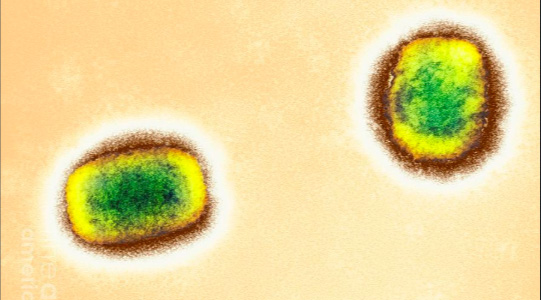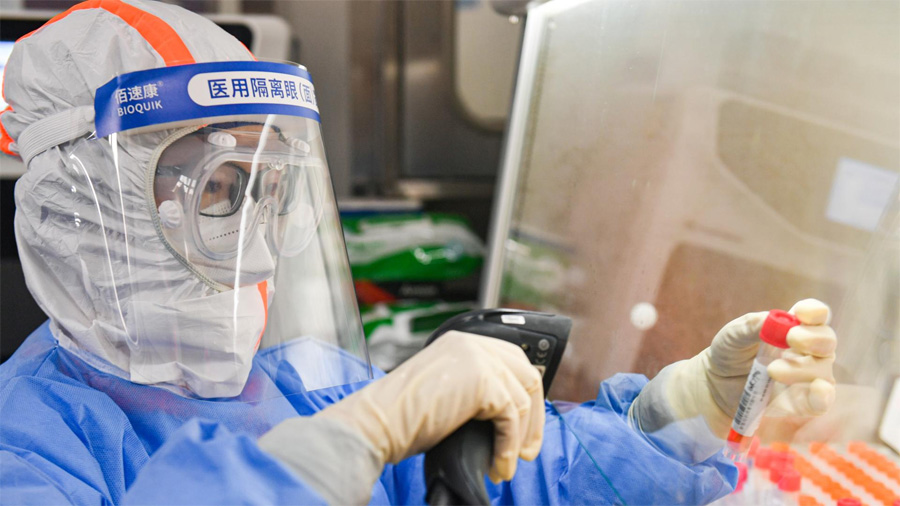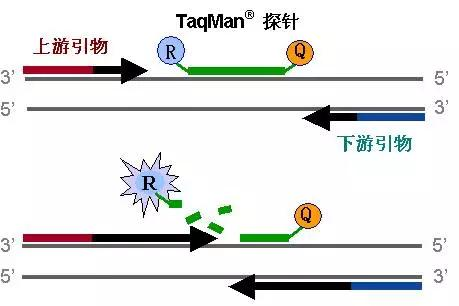Monkeypox Virus Detection Raw Materials (Covering Diagnostic Enzymes, Antigens, Antibodies)
Time:2023-12-04 Hits:232
What is monkeypox virus?
Monkeypox is a species of Orthopoxvirus in the family Poxviridae. It is a rare viral zoonotic disease (a virus transmitted from animals to humans). Its causative agent, monkeypox virus, is a DNA (deoxyribonucleic acid) virus belonging to the genus Orthopoxvirus in the family Poxviridae, and has played a significant role in human history. The smallpox virus that has been raging for thousands of years is a "close relative". Monkeypox virus was first discovered in 1958, when a group of monkeys used for research developed a "pox-like: contagious disease, hence the name. Since thenWHO1980Since the eradication of smallpox was announced in 2006, monkeypox virus has become an orthopoxvirus with a greater impact on public health.

The primary mode of transmission of monkeypox virus is through direct contact with the blood, body fluids, skin or mucous membrane wounds of infected animals. Secondary transmission between humans is mainly due to close contact with the respiratory secretions of infected persons, skin lesions, or items contaminated by patient body fluids or diseased tissues (such as clothing and bedsheets contaminated by fluids flowing out after the patient's rash ruptures). Monkeypox virus can exist in respiratory droplets, but it usually requires prolonged face-to-face contact to spread.
The initial symptoms of monkeypox infection in humans include fever, headache, muscle aches, back pain, swollen lymph nodes, etc., which can later develop into a widespread rash on the face and body. Most people who are infected recover within a few weeks, but some people become seriously ill..
According to the World Health Organization, the symptoms of monkeypox virus infection are similar to those of smallpox, but the clinical severity is milder. The incubation period is usually 6 to 13 days and may be as long as 21 days..
Due to the "cross-immunity" characteristics of multiple poxviruses, human vaccination with smallpox vaccine is also effective in preventing and treating monkeypox. According to data from the World Health Organization, the smallpox vaccine is 85% effective against monkeypox. Common household disinfectants can kill monkeypox virus.
Detection methods for monkeypox virus

1. Nucleic acid amplification testing:Monkeypox virus nucleic acid can be detected in specimens such as skin rashes, blister fluid, scabs, oropharyngeal or nasopharyngeal secretions using nucleic acid amplification detection methods..
2. Antigen/antibody testing:Immunoassay methods can be used for both antigen and antibody detection. However, there is antigenic crossover between monkeypox virus and poxvirus, and the specificity is not enough. Therefore, monkeypox virus cannot be accurately identified and is often used in epidemiological investigations..
3. Virus culture:Monkeypox virus can be isolated by collecting the above specimens for virus culture. Virus culture should be carried out in biosafety laboratories at level three or above.
In response to the monkeypox epidemic, many IVD companies at home and abroad have responded actively and promoted the development and launch of monkeypox virus-related detection products. As a mature upstream supplier deeply involved in the field of life sciences, Seebio Biotech has a mature cell expression platform, stable cell line screening platform, macromolecule purification platform, and protein structure analysis platform. Seebio has long provided IVD companies with high-quality, high-quality Cost-effective raw materials. For more product details, please contact us: service@seebio.cn or Phone: +86 21 58183719 or Wechat: +86 158 0195 7578
1. Principle of fluorescence quantitative PCR
Fluorescent quantitative PCR was earlier called TaqMan PCR, and later also called Real-Time PCR. It is a new nucleic acid quantitative technology developed by the American PE (Perkin Elmer) company in 1995. This technology is based on conventional PCR and adds fluorescently labeled probes or corresponding fluorescent dyes to achieve its quantitative function. Its principle: As the PCR reaction proceeds, the PCR reaction products continue to accumulate, and the fluorescence signal intensity also increases proportionally. After each cycle, a fluorescence intensity signal is collected, so that we can monitor changes in product amount through changes in fluorescence intensity, thereby obtaining a fluorescence amplification curve..
qPCR can be divided into fluorescent dye methods (represented by SYBR Green I method) and fluorescent probe methods (represented by TaqMan method).).
Fluorescent probe method (Taqman technology): TaqMan probe method qPCR is a method that uses TaqMan fluorescent probes for fluorescence detection. The basic principle is that during PCR amplification, a pair of primers and a specific fluorescent probe are added at the same time. .The probe is a linear oligonucleotide, labeled with a fluorescent reporter group and a fluorescent quencher group at both ends. When the probe is intact, the fluorescent signal emitted by the reporter group is absorbed by the quencher group. The PCR instrument cannot detect fluorescent signals; during PCR amplification (during the extension phase), the 5'-3' Dicer activity of Taq enzyme cleaves and degrades the probe, causing the reporter fluorophore and quencher fluorophore to separate, thus The fluorescence monitoring system can receive fluorescence signals, that is, each time a DNA strand is amplified, a fluorescent molecule is formed, realizing the accumulation of fluorescence signals and the formation of PCR products simultaneously, which is also the basis for quantification..

TaqMan hydrolysis probe action mechanism diagram
Advantages of TaqMan probe method qPCR
High specificity and accurate quantification - The fluorescent probe only binds to the target sequence. Theoretically, the fluorescent signal of the probe method only comes from the target sequence, that is, it is not affected by non-specific products. Therefore, the TaqMan probe method qPCR has high specificity and accurate quantification..
Experiment time is short - The high specificity of probe method qPCR eliminates the need to set up a melting curve to detect the specificity of the amplified product, greatly shortening the experimental time..
Compatible with multiple reactions and strong applicability - Fluorescent reporter groups of different wavelengths can label different probes, so multiple targets can be detected simultaneously using different fluorescently labeled probes in the same reaction system, thereby saving experimental costs..
Taqman probe method fluorescence PCR related reagent raw materials
Sample extraction and purification
|
Product Description
|
product name
|
Item number
|
Remark
|
|
nucleic acid releasing agent
|
nucleic acid releasing agent
|
DAA1404A
|
|
|
Common components of nucleic acid release agents
|
Trishydroxymethylaminomethane hydrochloride (TRIS-HCl)
|
buffer salt
|
|
|
Guanidine ThiocyanateGuanidine isothiocyanate
|
protein denaturant
|
||
|
Guanidine hydrochloride
|
Strong nuclease inhibitor
|
||
|
Proteinase K
|
High specific activity
|
||
|
Sodium dodecyl sulfate (SDS)
|
Anionic detergent
|
||
|
Urea
|
|
||
|
Ethylenediaminetetraacetic acid disodium salt (EDTA-2Na)
|
Important chelating agent
|
Probe method qPCR detection master mix
|
Product Description
|
product name
|
Item number
|
Remark
|
|
Ultra high sensitivity
|
Seebio® TaqMan multiplex qPCR master mix (probe method)
|
DAA1400A
|
Single weight/multiplex, premixed solution, convenient for experiments
|
|
Fully premixed stability enhanced version (including UDG Mg2+ and dNTP)
|
Seebio® Enhan TaqMan Multiplex qPCR Master Mix (UDG plus)(2XMix premix reagent contains reaction buffer and enzyme mix, including Mg2+ and dNTPs)
|
DAA1401A
|
Single enzyme + buffer + dNTPs and Mg2+ The input amounts of enzyme, dNTPs and Mg2+ can be optimized according to the experiment.
|
single enzyme
|
Product Description
|
product name
|
Item number
|
Remark
|
|
Hot start Taq enzyme
|
Seebio® HotStart Direct Taq DNA Polymerase
|
DAA1402A
|
-
|
|
Bst enzyme
|
Bst Ⅱ plus DNA Polymerase
|
DAA0792A
|
-
|
|
Thermosensitive UDG enzyme
|
Uracil DNA Glycosylase (UDG), heat-labile
|
DAA0230A
|
-
|
Seebio Biotech can provide a variety of molecular diagnostic enzyme products, all of which can be customized in large packaging. For more product details, please contact us: service@seebio.cn or Phone: +86 21 58183719 or Wechat: +86 158 0195 7578
2. Monkeypox virus immunoassay
Monkeypox virus immunoassay methods mainly include Enzyme-linked immunosorbent assay (ELISA) Detection of IgG and IgM antibodies and detection of viral antigens by immunohistochemistry. and immunochemical analysis using MPXV antibodies to differentiate between poxvirus infections and herpesviruses.
It has been confirmed that antiviral antibodies and T cell responses increase before and after the onset of the disease, and monkeypox virus IgM and IgG were detected in serum around 5 days and more than 8 days after the onset of the rash, respectively. MPXV infection is likely to be diagnosed if IgM and IgG antibodies are present in the serum of unvaccinated individuals with a history of rash and severe illness. A positive IgM capture ELISA indicates exposure to MPXV, whereas a positive IgG capture ELISA indicates that the individual has been previously exposed to MPXV through vaccination or natural infection. The presence of both IgM and IgG in a sample indicates previous vaccination or exposure to an individual naturally infected with MPXV. However, orthopoxviruses are serologically cross-reactive, and antigen and antibody detection methods cannot provide confirmation of monkeypox specificity, but serological testing may be feasible in areas where MPXV is endemic..
Monkeypox antigen testing tests human serum, plasma, whole blood, throat swabs, saliva or lesion exudates to determine the presence of monkeypox virus antigens. The monkeypox virus IgM/IgG antibody test uses a few drops of blood to look for antibodies produced by the body after infection with monkeypox.
Seebio Biotech has successfully developed a number of monkeypox virus-related protein products (prokaryotic expression/eukaryotic expression). The recombinant protein was designed based on the published gene sequence of monkeypox virus. The MonkeypoxVirus gene sequence was obtained through chemical synthesis, and the recombinant protein was expressed/purified using the E.coli expression system. Positive control products available for antigen detection.
Seebio's R&D team also used the developed monkeypox protein product as an immunogen and used rapid monoclonal antibody discovery technology to screen out nearly a hundred monkeypox antibodies, involving four key epitopes A35R, B6R, A29L, and M1R, and Successfully paired high-affinity A35R antibody and A29L antibody.
Monkeypox Antigen and Antibody Product List:
|
Monkeypox virus MPXV antigenTools and reagents that can be used in the development of viral vaccines, diagnostic reagents and basic research
|
||||
|
Item number
|
||||
|
Gene name
|
A29L
|
A35R
|
B6R
|
M1R
|
|
Target introduction
|
A29L is an intracellular mature virus (IMV) surface envelope protein (homologous to vaccinia virus VACV, A27). Intracellular mature virus (IMV) surface envelope protein mediates virus recognition of host cells.
|
A35R, which is highly similar to A33R of vaccinia virus, is an extracellular enveloped virus (EEV)-specific type II membrane glycoprotein that plays a key role in efficient EEV formation and contributes to efficient cell-to-cell spread of viral particles. , a potential target for the development of therapeutic antibodies against monkeypox virus.
|
B6R is a host-range protein located on the membrane of extracellular enveloped virions (EEV). It is homologous to the vaccinia virus complement control protein B5 and participates in the negative regulation of complement activation. Studies have shown that B5 relies on the interaction with A33 or A34 to localize to the site of the intracellular envelope, and can bind to each other and be released into the envelope of extracellular virions. B5 is important for efficient production of infectious EVs, and the A33, A34, and B5 complex plays a role in ER exit and the correct localization of the three glycoproteins to the intracellular site of the envelope.
|
M1R is homologous to the vaccinia virus L1 protein and is a transmembrane protein found on the surface of mature IMV particles. Encoded by the L1R ORF, it is highly conserved, participates in virion assembly, and plays an important role in virus entry and maturation. L1 is required for the induction of low-pH-triggered cell-cell fusion and is important for vaccinia virus replication.
|
|
purity
|
Greater than 90%, SDS-PAGE
|
|||
|
Buffer
|
1x PBS, pH 7.4
|
|||
|
store
|
-80℃Store in separate packages to avoid repeated freezing and thawing.
|
|||
|
use
|
For IgG/IgM and total antibody detection after monkeypox virus infection
|
|||
|
Monkeypox virus MPXV antibodyTools and reagents that can be used in the development of viral vaccines, diagnostic reagents and basic research
|
|||
|
Item number
|
|||
|
Immunogen
|
Monkeypox virus A29L protein recombinant antibody(MPXV-A29L-Antibody)
|
Monkeypox virus A35R protein recombinant antibody(MPXV-A35R-Antibody)
|
Monkeypox virus B6R protein recombinant antibody(MPXV-A35R-Antibody)
|
|
application
|
ELISA, immunochromatography
|
||
|
purity
|
Greater than 90%, SDS-PAGE
|
||
|
Buffer
|
1x PBS, pH 7.4
|
||
|
store
|
-80℃Store in separate packages to avoid repeated freezing and thawing.
|
||
Other paired antibodies to monkeypox virus are being gradually screened, and the monkeypox detection panel will be launched soon. Welcome to consult!
